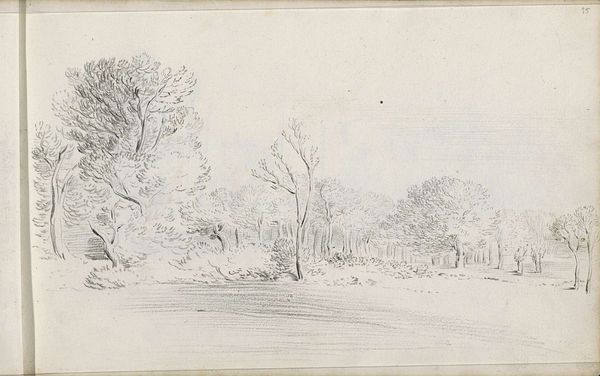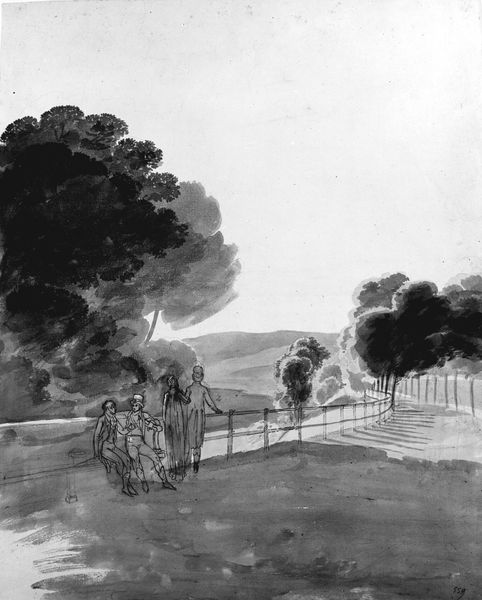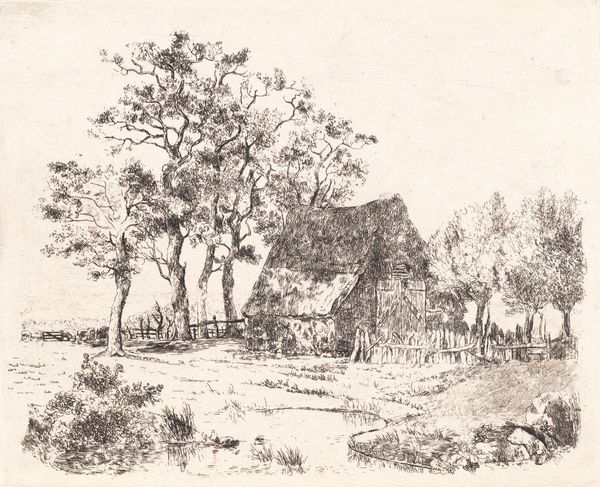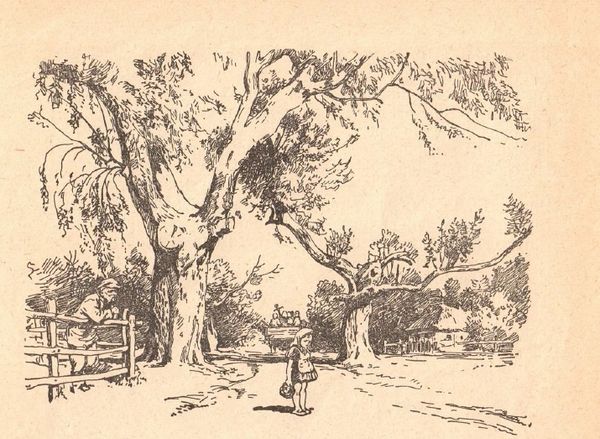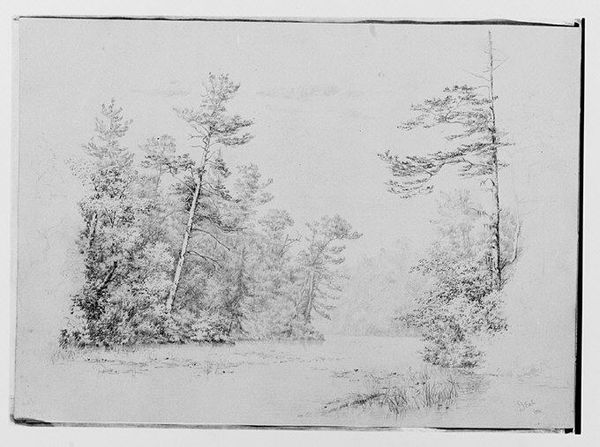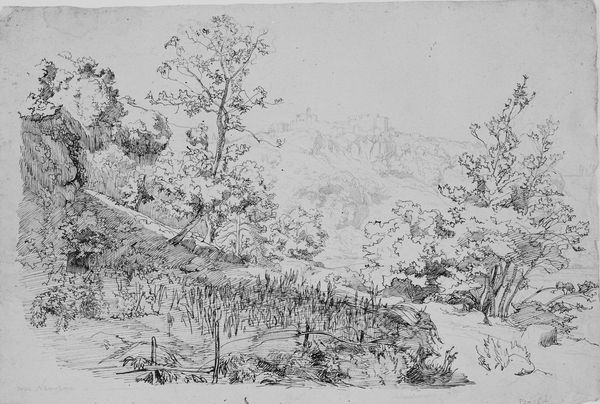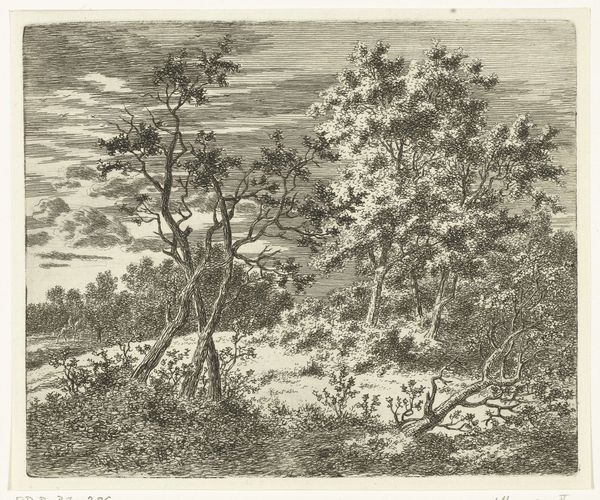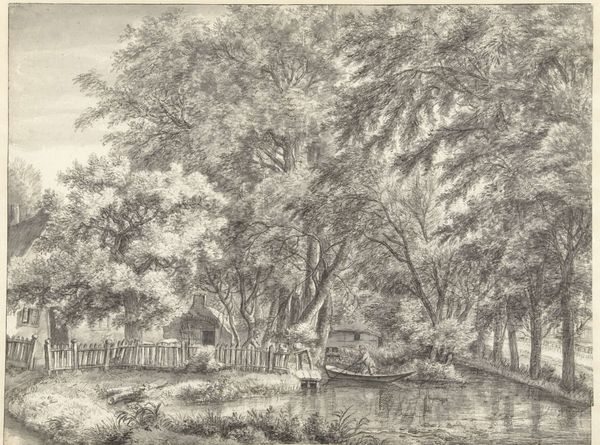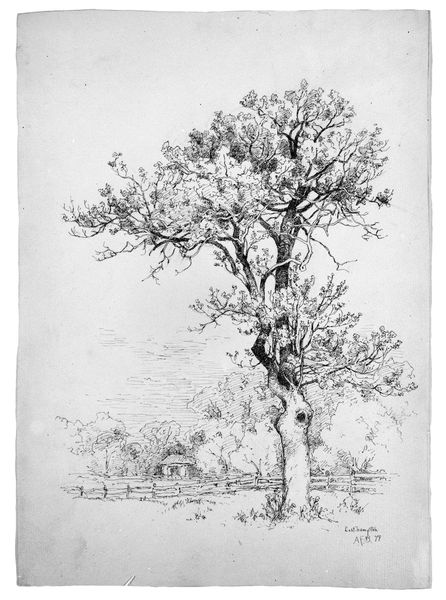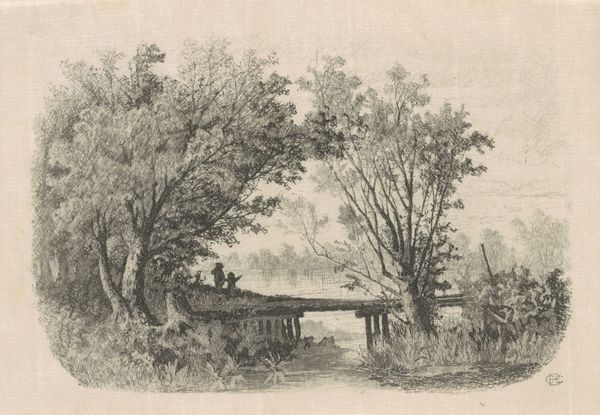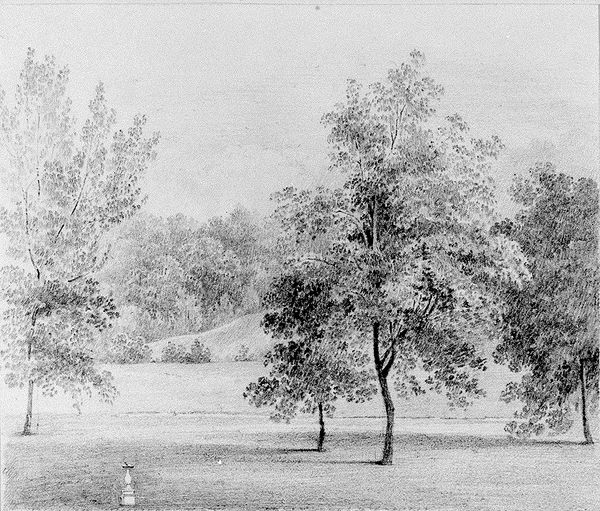
drawing, pencil, graphite
#
drawing
#
landscape
#
pencil
#
graphite
#
realism
Copyright: Public domain
Curator: Looking at this drawing, "Trees in Baran-Eli," completed in 1906 by Konstantin Bogaevsky, I am struck by how muted the tone is; there's a prevailing quietness. Editor: It's a very intimate piece. The graphite lends it a certain softness, almost dreamlike. The light seems diffused. What was Bogaevsky engaging with in that moment, politically, culturally? Curator: This piece reflects Bogaevsky's fascination with landscapes, particularly his native Crimea. However, it's essential to consider the wider context. 1906 was a time of significant upheaval in Russia, following the 1905 revolution. Intellectuals, including artists, found themselves caught between revolutionary ideals and disillusionment with the autocracy. Bogaevsky would have witnessed strikes and social disruption in his day. Editor: Do you think that socio-political turbulence influenced his compositional choices? Because to me the rhythm of the marks seems so deliberately tranquil. Notice how he uses hatching and cross-hatching, varying the pressure of the pencil to achieve a delicate range of values, to simulate depth. Curator: It’s quite likely. Though his style seemingly fits the conventions of realism, there's a pervasive underlying atmosphere of tension. Even in this relatively tranquil scene, perhaps there is a feeling that something unsettling lies just beneath the surface. Editor: It is interesting that you note this, as I am drawn to the composition—the skeletal structure of those trees reaching into the sky. The placement of the trees themselves seems almost choreographed, drawing your eye through the work. Curator: Crimea also represented a complex geopolitical space within the Russian Empire. The Russian state viewed it as both a symbol of imperial power and a vulnerable frontier zone facing foreign powers in the Black Sea region. This impacted how places like Baran-Eli and its residents were represented. The simplicity of form could symbolize an effort by some Imperial artists to assert the natural resources of the land. Editor: So, the seemingly gentle pencil strokes could be viewed as carrying subtle social messages? Interesting. Seeing it through that frame changes things. Well, this piece invites us to reflect on art’s engagement with individual emotion as well as cultural reflection. Curator: Indeed, it bridges an artist’s immediate engagement with setting and how we process our own understanding of historical forces through our experiences.
Comments
No comments
Be the first to comment and join the conversation on the ultimate creative platform.
